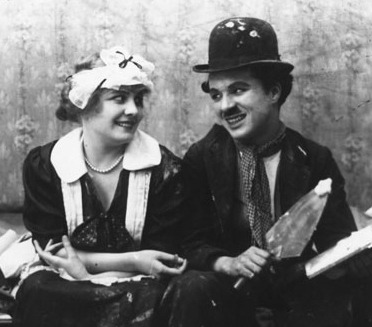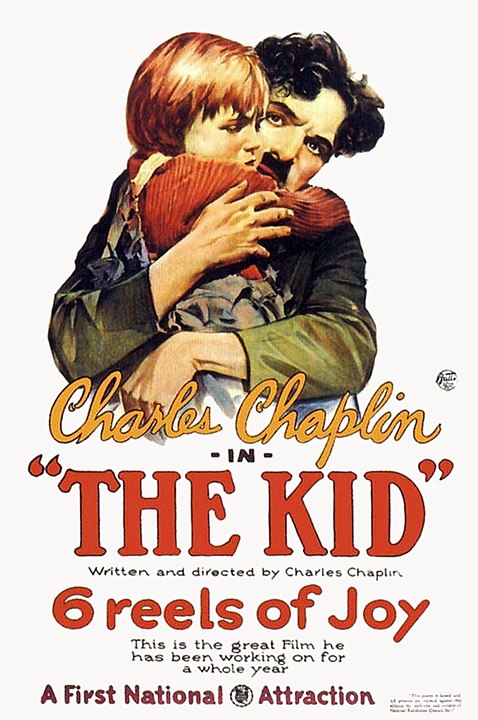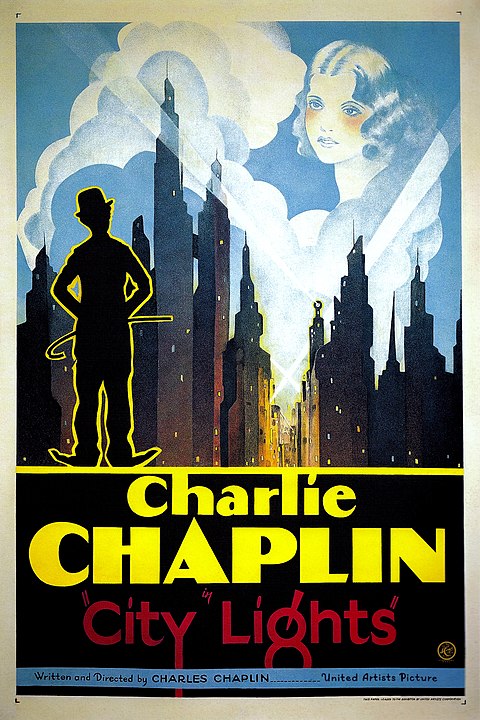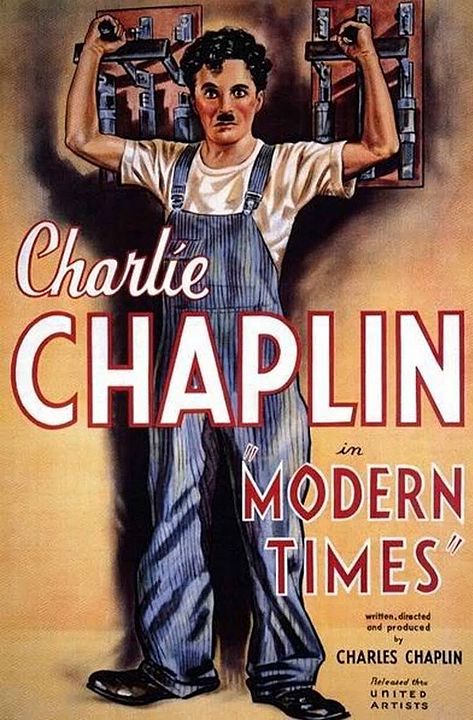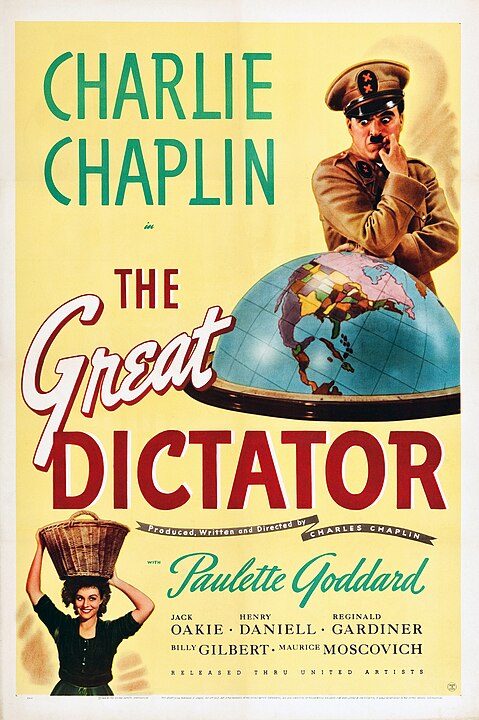Charlie Chaplin’s iconic bowler hat and cane are symbols of a bygone era when silent films captivated audiences worldwide. But did you know Chaplin’s career didn’t just survive the shift to talkies—it flourished? His seamless move from silent to sound cinema wasn’t just about adding dialogue; it was a masterful adaptation of storytelling, humor, and emotion that deepened his impact on the film industry. As you explore the evolution of Chaplin’s work, consider how his journey mirrors the broader changes in cinematic history and why his legacy persists today. What made his transformation so successful, and how does it continue to influence filmmakers?
Key Takeaways
- Chaplin seamlessly transitioned from silent films to talkies, starting with “The Great Dictator” which combined humor with sharp political satire.
- Despite the sound revolution, Chaplin’s “City Lights” and “Modern Times” retained silent film elements, showcasing his mastery of visual storytelling.
- His transition was marked by a blend of traditional silent film techniques with innovative use of sound effects, music, and eventually, spoken dialogue.
- Chaplin’s films continued to address social and political themes, using the added dimension of voice to enhance his commentary and reach a broader audience.
- The transition highlighted Chaplin’s versatility and adaptability, cementing his legacy as a pioneering figure who bridged the gap between silent and sound cinema.
The Silent Film Era
During the silent film era, from the 1890s to the 1920s, cinema transcended language barriers and became a universal form of entertainment. You’d be amazed to learn how silent films, with their rich visuals and expressive performances, connected people from diverse backgrounds. It was a time when the magic of the moving image first captivated audiences worldwide, with no need for spoken words to convey deep emotions and complex narratives.
In this visually driven period, icons like Chaplin emerged, revolutionizing the way stories were told on screen. Silent film wasn’t just entertainment; it was a groundbreaking art form that explored human experiences, societal themes, and the boundless creativity of filmmakers. Chaplin, with his unique blend of comedy and drama, mastered the silent film’s language, speaking volumes through his actions alone.
These films evolved rapidly, from simple novelties to sophisticated narratives that tackled a wide array of themes. Innovations in storytelling and cinematography laid the groundwork for the movies you love today. So, when you think of silent film, remember it as the era that gave birth to cinematic giants and set the stage for the future of storytelling in film.
Chaplin’s Early Masterpieces
Building on his success in the silent film era, Chaplin’s early masterpieces like ‘The Kid’ and ‘City Lights’ showcased his unparalleled ability to weave comedy with poignant social commentary. You’ll see how he didn’t just make movies; he painted vivid pictures of life’s complexities, using silent films as his canvas.
Here’s what set these films apart:
- ‘The Kid’ – This film wasn’t just a series of comedic sketches. It explored deep into issues of poverty, family, and resilience, all while making you laugh. Chaplin showed you that humor could be a powerful vehicle for serious messages.
- ‘City Lights’ – Considered one of Chaplin’s crowning achievements, it balanced laughter with deep, heartfelt emotion. You’re not just entertained; you’re moved, reflecting on the human condition and the power of compassion.
- Social Commentary – Chaplin’s genius lay in his ability to infuse social commentary into his work without preaching. You’re engaged, entertained, and left pondering.
- Foundation for Evolution – These masterpieces weren’t the end but the beginning. They set the foundation for Chaplin’s seamless evolution into talkies, ensuring his continued success.
Through these early silent films, Charlie Chaplin didn’t just show you a story; he made you feel it.
Sound Revolution in Cinema
The late 1920s witnessed a monumental shift in cinema as the introduction of sound transformed silent films into talkies, forever altering the landscape of film production and consumption. This era marked the end of the silent film dominance and ushered in an age where sound effects and dialogue became central to storytelling. Innovations like the Vitaphone and Movietone systems enabled filmmakers to synchronize sound with moving images, bringing a new dimension of realism to the screen.
As you can imagine, scriptwriters now faced the task of incorporating dialogue into the narrative, adding depth to plots and characters. This requirement for spoken words led to more intricate storytelling, with audiences craving the enhanced engagement offered by talkies. Actors, too, found themselves adapting to this new terrain, as their performances now extended beyond physical expression to include vocal delivery. Some thrived, while others struggled to adjust their skills to the demands of sound acting.
The change was met with enthusiasm from viewers, who flocked to cinemas to experience the novelty of hearing actors speak. The realism afforded by sound effects and dialogue didn’t just attract more people; it revolutionized the movie-watching experience, setting the stage for the rich, complex cinema we enjoy today.
City Lights: A Silent Statement
You’ll find that ‘City Lights’ stands as a testimony to Charlie Chaplin’s creative resilience, even as the film industry embraced talkies. His ability to convey emotional depth without spoken words in this film is nothing short of remarkable. It’s a clear example of how silence can speak volumes, especially in the hands of a master like Chaplin.
Creative Resilience in Silence
Chaplin’s ‘City Lights’ exemplifies his creative resilience, demonstrating that silence can speak volumes in storytelling. In a world swayed by the allure of talkies, Chaplin’s dedication to the silent film medium highlights his innovative spirit and his belief in the power of visual storytelling. Here’s how he did it:
- By using The Tramp’s expressive antics, Chaplin conveyed complex emotions without a single word.
- Through meticulous scene composition, each frame told a part of the story, making dialogue unnecessary.
- Chaplin’s timing and use of physical comedy bridged the gap between the audience and his silent world.
- The film’s success proved that creative storytelling transcends spoken language, cementing Chaplin’s legacy in the silent era.
Emotional Depth Without Words
In ‘City Lights,’ expressive gestures and physical comedy reveal an emotional depth that words often struggle to achieve. This silent film classic showcases Chaplin’s unmatched ability to connect with you without uttering a single word. Through The Tramp’s eyes, his clumsy steps, and tender interactions, you’re drawn into a narrative rich with laughter, tears, and empathy. Chaplin’s performance is a tribute to the power of silent storytelling, delivering poignant social commentary and heartfelt moments with nothing but visual cues. ‘City Lights’ proves that silence can speak volumes, touching your heart and invoking a spectrum of emotions. Through this film, Chaplin demonstrates that true artistry doesn’t always need words to resonate deeply with its audience.
Modern Times: Bridging Eras
In ‘Modern Times’, you witness Chaplin’s genius in threading the needle between silence and sound, a feat that marked a pivotal moment in film history. He challenges you to contemplate the impact of industrialization with humor and pathos, all while experimenting with sound in a primarily silent film. This film not only serves as a bridge between eras but also cements Chaplin’s legacy as a master storyteller who could speak volumes without a single word.
Silent Era Throwback
Reflecting on ‘Modern Times,’ you’ll witness a brilliant juxtaposition of silent film nostalgia and the innovative use of sound, marking a pivotal moment in cinematic history. This film, a throwback to the silent era, seamlessly marries Chaplin’s classic physical comedy with the emerging technology of sound. Here’s how:
- Silent film charm: Retains the essence of silent era storytelling through expressive visual comedy.
- Sound enhancements: Introduces sound effects and music, enriching the narrative without relying on dialogue.
- Social critique: Uses the platform to humorously critique the dehumanization in an industrialized world.
- Timeless resonance: Bridges the gap between eras, showing how themes of modernization remain relevant, connecting past and present audiences.
‘Modern Times’ stands as a demonstration of Chaplin’s brilliance in navigating cinema’s evolution.
Sound Incorporation Challenges
Charlie Chaplin faced significant challenges as he navigated the shift from silent films to talkies, particularly during the production of ‘Modern Times.’ This film became a masterful bridge between eras, creatively blending the cherished elements of silent cinema with the burgeoning technology of sound effects. Chaplin’s fear was palpable; he worried that introducing dialogue might dilute the essence of his comedy. Yet, he took a bold step forward. By innovatively using sound effects while limiting dialogue, Chaplin demonstrated his adaptability. ‘Modern Times’ not only showcased his ability to evolve with changing technology but also confirmed his commitment to his unique comedic style, ensuring his humor resonated even as the film industry transformed around him.
Legacy of Modern Times
Modern Times carved a unique niche in cinematic history, effortlessly merging the silent era’s charm with the dynamic allure of sound films. Here’s how it bridged eras:
- Transition Masterpiece: Modern Times symbolized Chaplin’s leap from silent to sound films in 1936, capturing a pivotal moment in cinema.
- Societal Mirror: The film explored the impacts of automation, industrialization, and the Great Depression, reflecting Chaplin’s talent for weaving social commentary with humor.
- Sound Innovation: Despite fears of losing his comedic essence, Chaplin ingeniously used sound effects and music, maintaining the spirit of silent films.
- Cinematic Legacy: Modern Times stands as a demonstration of Chaplin’s ability to adapt, showcasing a seamless blend of silent film charm with the emerging era of talkies.
The Great Dictator: Embracing Dialogue
In ‘The Great Dictator,’ Chaplin boldly embraced dialogue for the first time, delivering a performance that resonated deeply with audiences worldwide. This marked a significant shift in his career, evolving from the silent film era to the age of talkies. Through dialogue, Chaplin’s genius in blending humor with sharp social commentary became more pronounced. ‘The Great Dictator’ not only showcased his adeptness in using spoken words but also his courage in addressing the pressing political climate of the 1940s.
Chaplin’s speech in the film is iconic, heralded as one of the most powerful moments in cinematic history. It transcended the boundaries of entertainment, touching on themes of brotherhood and unity in times of turmoil. This change to dialogue wasn’t just a technical shift but a symbolic gesture towards engaging more directly with the audience on issues that matter.
His ability to maintain his comedic touch, while delivering potent messages through dialogue, illustrated Chaplin’s evolution as a filmmaker. ‘The Great Dictator’ remains a proof to his versatility and willingness to embrace change, ensuring his legacy endures in the world of cinematic storytelling.
Artistic Challenges and Innovations
As you explore Charlie Chaplin’s progression from silent films to talkies, you’ll uncover how he navigated the artistic hurdles of the era. You’ll see how his creative techniques evolved, ensuring his legacy in cinematic history remained untarnished. This evolution wasn’t just about adapting to new technology; it was about redefining storytelling in film.
Navigating Silent to Sound
Many actors and directors faced significant artistic challenges when shifting from silent to sound films, marking a pivotal era of innovation and adaptation in cinema. Charlie Chaplin’s transformation highlights the profound impact sound had on silent films’ stars. Here’s how they navigated this seismic alteration:
- Sound technology innovations like the Vitaphone system and Movietone revolutionized film, demanding new technical skills.
- Scriptwriters now had to craft dialogue, leading to richer plots and deeper character development.
- Actors adjusted their performances to include speaking roles, altering their on-screen dynamics.
- Audience experience was enhanced with the depth sound brought, creating a new cinematic dimension.
This era wasn’t just about the challenges; it was a time of great creativity and pioneering breakthroughs in storytelling.
Creative Techniques Evolution
Chaplin’s journey into talkies forced him to blend dialogue with silent film techniques, sparking a creative revolution in his work. His films began to leverage sound technology, not just for dialogue, but to deepen the emotional resonance of his storytelling. By embracing the Vitaphone system, he was at the forefront of cinematic innovation, making his films more engaging and versatile.
| Pre-Talkies | Post-Talkies |
|---|---|
| Mime & Physical Comedy | Enhanced with Dialogue |
| Title Cards | Direct Speech |
| Musical Score Only | Sound Effects & Music |
| Static Camera Angles | Dynamic Camera Work |
This evolution showcased Chaplin’s adaptability, turning the challenges of sound into opportunities for artistic growth. His work didn’t just change; it thrived, setting a new standard for filmmakers worldwide.
Legacy in Cinematic History
Charlie Chaplin’s expertise in overcoming the artistic challenges of shifting from silent films to talkies revolutionized cinematic history, leaving an indelible mark on the industry. His journey showcases:
- His smooth adaptation expanded storytelling capabilities, engaging a broader audience.
- The Great Dictator’s speech, a demonstration of Chaplin’s innovative spirit, remains a powerful cinematic moment.
- Chaplin’s embrace of new technologies kept him relevant amidst the industry’s evolution.
- The timeless themes of his works continue to resonate, highlighting his enduring impact.
Chaplin’s legacy as a pioneer of both silent and sound cinema cements his role as a cultural titan. His films, bridging the gap between silent films and sound cinema, enrich film history and inspire generations.
Social Commentary Through Film
Through his films, you witness how Chaplin masterfully critiqued societal issues, blending satire and humor to spark discussion and inspire change. His silent films weren’t just about making you laugh; they were loaded with social commentary that still resonates today. In “Modern Times,” Chaplin tackled the dehumanizing effects of technology on workers during the Great Depression. You see characters struggling against machines, a stark metaphor for the era’s economic hardships and the loss of personal connection in an increasingly industrialized world.
Then came “The Great Dictator,” where Chaplin’s genius took on a more vocal form. This film didn’t just satirize the political climate of the 1940s; it screamed against tyranny, advocating for brotherhood and unity in a world torn apart by war. It’s in these moments you realize Chaplin’s silent films were never silent on matters that mattered. His ability to weave humor with biting social commentary made his work both timeless and impactful, ensuring his legacy as a pioneer in using cinema to address political and social issues. You’re not just watching films; you’re getting a masterclass in how to challenge the status quo with a smile.
Chaplin’s Legacy and Influence
Reflecting on his films, it’s clear that Chaplin’s ability to blend humor with poignant social commentary not only entertained but left a lasting impact on cinema and audiences alike. His journey from silent films to sound films marks a significant chapter in film history, showcasing his versatility and genius.
Here’s how Chaplin’s legacy and influence unfold:
- Expansion of Storytelling: The shift to sound films allowed Chaplin to explore new narrative depths, reaching wider audiences and enriching the cinematic experience.
- Iconic Speeches: His speech in ‘The Great Dictator’ remains a testament to his mastery over sound cinema, blending powerful dialogue with compelling performances.
- Adaptation to Technology: Chaplin’s willingness to embrace new technologies demonstrated his forward-thinking approach, ensuring his films remained relevant and impactful.
- Enduring Themes: The themes of his films, from the struggles of the common man to critiques of societal injustices, continue to resonate, proving the timeless nature of his work.
Chaplin’s legacy as a pioneer in both silent and sound cinema cements his status as a monumental figure in film history. His films are not just entertainment; they’re lessons in humanity, crafted by a master storyteller.
Beyond Talkies: Chaplin’s Lasting Impact
Chaplin’s evolution into talkies marked a pivotal moment, showcasing his unmatched adaptability and creative vision in the constantly evolving landscape of cinema. His shift not only expanded his storytelling capabilities but also broadened his audience reach, highlighting a filmmaker who was always ahead of his time. The iconic speech from ‘The Great Dictator’ stands as a validation of his genius, perfectly blending entertainment with poignant social commentary.
| Aspect | Impact |
|---|---|
| Storytelling | Enhanced capabilities, deeper narratives. |
| Audience Reach | Wider, more diverse audiences globally. |
| Social Commentary | Fused entertainment with critical discussions. |
| Legacy | Lasting influence on film and culture. |
Chaplin’s willingness to embrace new technologies ensured his films remained relevant, securing his esteemed place in the annals of film history. His works, infused with humor and heartfelt social commentary, continue to resonate with people everywhere, underscoring his legacy as a cinematic pioneer. The themes he explored are timeless, making his films perpetually influential. Chaplin’s impact on the film industry and beyond is a validation of his visionary approach, proving that his cultural influence transcends time and culture.
Frequently Asked Questions
What Was the Transition From Silent Films to Talkies?
The shift from silent films to talkies in 1927 transformed cinema. You saw the industry evolve with ‘The Jazz Singer,’ leading to job losses, equipment upgrades, and actors adapting to include dialogue in their performances.
What Did Charlie Chaplin Say About Talkies?
Charlie Chaplin wasn’t a fan of talkies at first; he believed pantomime and visual storytelling spoke louder than words. But he eventually embraced them, creating hits like The Great Dictator while keeping his comedic genius.
What Makes Silent Movies Easier to Follow Charlie Chaplin?
You find silent movies easier to follow with Chaplin because his physical comedy and expressive gestures transcend language barriers. His storytelling is simple, clear, and his iconic character, The Tramp, is universally relatable.
How Did Talkies Differ in Their Content From Earlier Silent Movies?
Talkies differed from silent movies by incorporating dialogue, leading to more complex plots and richer character development. They also made explanations quicker and viewing more realistic, fundamentally changing storytelling and attracting larger audiences.
Conclusion
Charlie Chaplin didn’t just adapt to talkies; he mastered them, weaving sound into his storytelling with the same finesse he did silence. From his silent masterpieces to the insightful commentaries of “City Lights” and “Modern Times,” he bridged cinematic eras, using humor and emotion to critique society. His legacy isn’t just in the laughs but in the profound influence he’s left on film and beyond. Chaplin’s artistry proves timeless, echoing through cinema’s evolution, inspiring generations to come.


